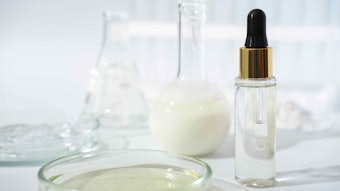Surfactants are used in many industries for various reasons but their functionality primarily rests in the ability to lower the surface tension of a liquid and the interfacial tension between liquids. They may act as detergents, wetting agents, emulsifiers, solubilizers, foaming agents and pigment dispersants. In personal care, surfactants are used to create lather and cleanse the skin and hair of dirt and excess sebum; in fact, soap is the oldest surfactant still used today.
Emulsifiers are an important category of surfactants for personal care. They are essential to produce creams or lotions by enabling oil and water/aqueous components to mix and remain stable over a long period of time. Choosing an optimum emulsifier system helps create evenly dispersed, small droplets, thus providing kinetic stability and an elegant texture, skin feel and appearance. Typically, emulsions have a milky white, opaque appearance due to the type and levels of emulsifiers used; however, there are microemulsions that appear clear or transparent to the human eye. These are used in specialized applications, such as enhancing skin permeation of active substances.1 Emulsifiers often impart a specific texture or sensory aspect to the end product, so their selection is important for marketing appeal as well as technical aspects.
The global market for personal care surfactants was estimated to be around US $10.5 billion in 2012.2 Green or renewably based surfactants, although initially a small market base, are predicted to grow rapidly over the next decade, as new technologies emerge to produce lower cost raw materials. Currently, many certified organic shampoos and body washes use soaps such as potassium cocoate as their primary cleansing agent, in part due to a lack of suitable, organically approved foaming alternatives. This article reviews the use of modern surfactants and emulsifiers developed based on a green and eco-conscious philosophy.










